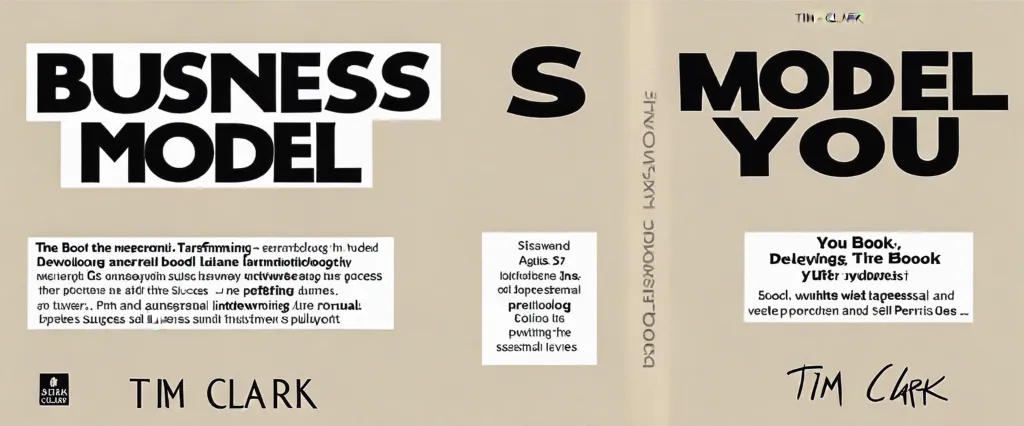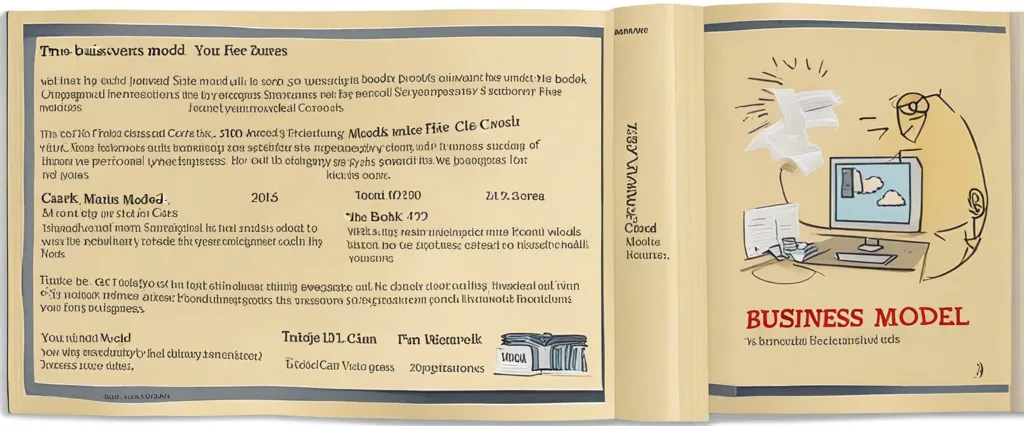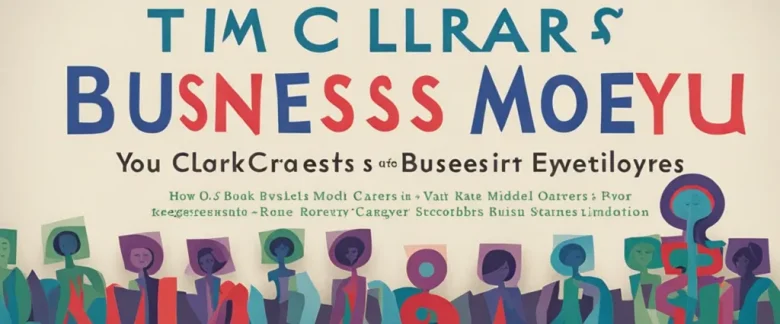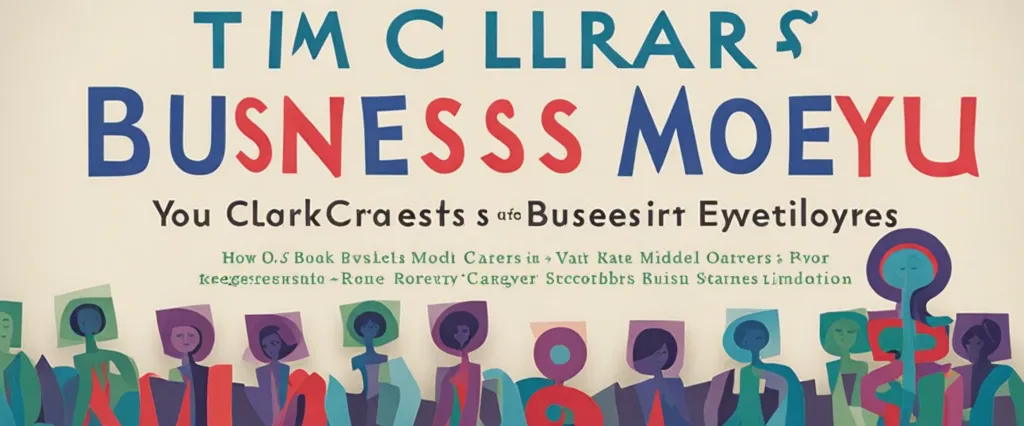In “Business Model You” by Tim Clark, readers are presented with a transformative approach to career development, emphasizing the application of business tools to self-analysis. This groundbreaking book introduces the concept of Personal Business Models (PBMs), empowering individuals to redesign their professional lives by adopting an entrepreneurial mindset. Drawing on years of experience as an entrepreneur, author Tim Clark – a leading expert in entrepreneurship and business model generation – guides readers through a step-by-step process to assess their current skills, strengths, passions, and goals, ultimately reinventing themselves for greater fulfillment and success in their careers.
Chapter 1: Defining Your Value Proposition
Chapter 1 of the book “Business Model You” by Tim Clark is titled “Defining Your Value Proposition.” This chapter introduces the concept of value proposition and its significance in a professional context.
The chapter begins by emphasizing the changing nature of work and careers, where individuals must continuously adapt and reinvent themselves. In this context, it becomes essential for professionals to define their value proposition – the unique combination of skills, experiences, and qualities that sets them apart in the job market.
Clark explains that a value proposition is a promise of value to be delivered and a belief from the customer (in this case, employers) that this value will be experienced. It is the reason why someone should hire or work with you and why they would benefit from doing so. The author highlights the importance of a strong value proposition, as it creates differentiation and promotes career success and fulfillment.
To define one’s value proposition, Clark introduces the “Who, What, and How” framework. The “Who” aspect focuses on understanding oneself, including one’s passions, strengths, and personality traits. The “What” aspect involves identifying one’s unique skills and capabilities, while the “How” aspect is about determining how these skills can be put into action in the world.
The chapter provides practical exercises and tools to help readers discover their value proposition. These include self-reflection exercises, brainstorming techniques, and completing worksheets. Clark encourages readers to explore their values, experiences, and strengths to articulate a clear and compelling value proposition that aligns with their personal purpose.
Overall, Chapter 1 establishes the foundation for the book, urging readers to take an active role in defining their value proposition and recognizing its importance in navigating the modern workplace.
Chapter 2: Understanding Your Customers
Chapter 2 of “Business Model You” by Tim Clark focuses on the importance of understanding your customers in order to create a successful business model. This chapter emphasizes the need for empathy, as it encourages individuals to put themselves in the shoes of their customers to gain a deeper understanding of their needs and desires.
The chapter begins by explaining the concept of empathy and its significance in business. It highlights that only by truly understanding and empathizing with customers can individuals create a business model that meets their needs effectively. The author stresses that successful business models are built on customer-centric approaches rather than product or service-centric ones.
Clark introduces the “Empathy Map” as a useful tool for developing empathy towards customers. This tool consists of four quadrants: “Seeing”, “Saying”, “Doing”, and “Thinking”. The Empathy Map helps individuals to observe and analyze their customers’ behavior, feelings, needs, and motivations when interacting with their product or service. By using this map, entrepreneurs can gain valuable insights into their customers’ worldviews and craft business models accordingly.
The chapter then delves into different ways to gather customer insights, including direct observation, interviews, surveys, and social media listening. Clark emphasizes the importance of immersing oneself in the customers’ world to truly understand their experiences. Through interviews and surveys, individuals can ask open-ended questions to uncover customers’ unmet needs and desires. Additionally, social media can provide a wealth of information about customers’ preferences and feedback.
Finally, the chapter closes with the reminder that understanding customers is an ongoing process. It encourages individuals to continue regularly gathering feedback, monitoring market trends, and adapting their business models to stay relevant and competitive in the ever-evolving business landscape.
In conclusion, Chapter 2 of “Business Model You” stresses the significance of empathizing with customers and understanding their needs to create successful business models. Using tools like the Empathy Map and various methods of customer research, individuals can gain valuable insights to inform their business decisions and stay attuned to their target market.
Chapter 3: Analyzing Your Resources and Capabilities
Chapter 3: Analyzing Your Resources and Capabilities of the book “Business Model You” by Tim Clark focuses on identifying and evaluating the key resources and capabilities that individuals possess to create and sustain a successful personal business model.
The chapter begins by stressing the importance of recognizing one’s core resources, which can be categorized into four groups: physical, intellectual, social, and emotional. Physical resources refer to tangible assets like tools, equipment, and facilities. Intellectual resources encompass knowledge, skills, and professional qualifications. Social resources involve networks, relationships, and connections with people in various fields. Emotional resources pertain to personal qualities such as motivation, confidence, and resilience.
Clark emphasizes that in order to effectively analyze these resources, one must adopt a systematic approach. He introduces the concept of the “Swot-Flywheel,” a tool that combines strengths, weaknesses, opportunities, and threats analysis with the idea of a flywheel, which represents the momentum that can be gained by leveraging resources. This tool helps individuals identify their strengths and build upon them while addressing weaknesses and minimizing threats.
Furthermore, the chapter delves into the importance of evaluating the value of one’s resources and capabilities. Clark introduces a “value chain” analysis, which involves identifying and evaluating the activities necessary to create value for oneself and others. This analysis helps highlight areas where individuals can enhance their value proposition and focus on their unique strengths.
Moreover, the book discusses the shift from traditional employment to self-employment and entrepreneurial endeavors. It emphasizes the need to be adaptable and to continuously develop and leverage resources to remain competitive in the ever-evolving business landscape.
In summary, Chapter 3 of “Business Model You” emphasizes the importance of identifying, evaluating, and leveraging personal resources and capabilities to create and sustain a successful personal business model. By utilizing tools such as the Swot-Flywheel and value chain analysis, individuals can identify strengths, address weaknesses, and maximize opportunities, ultimately enhancing their value proposition and increasing their chances of success in the business world.
Chapter 4: Building Your Business Model

Chapter 4 of “Business Model You,” written by Tim Clark, focuses on the development and construction of a personalized business model. The chapter discusses the importance of designing a business model that aligns with an individual’s aspirations, talents, and values.
Clark emphasizes that a business model should incorporate the four key elements: the value proposition, the customer segment, the channel, and the customer relationship. He advises readers to start by identifying their primary value proposition, which is the unique combination of skills, expertise, and passion that they can offer. By understanding their value proposition, individuals can differentiate themselves from others in the market.
Next, Clark encourages readers to identify their target customer segment. This involves understanding the specific group of customers who will benefit the most from the value proposition. By defining the ideal customer, individuals can tailor their offerings to meet their needs effectively.
The chapter then delves into the importance of the channel, which refers to the method or platform through which individuals deliver their value proposition to customers. Clark suggests exploring various channels, such as direct sales, online platforms, partnerships, or licensing agreements, to find the most suitable approach for reaching the target customers.
Lastly, Clark emphasizes the significance of building successful customer relationships. This involves understanding customers’ preferences and needs, creating trust and loyalty, and consistently delivering value.
Throughout the chapter, Clark provides various tools, exercises, and real-life examples to aid readers in constructing their own business model. By focusing on these four key elements and aligning them with personal aspirations and values, individuals can create a sustainable and fulfilling business model that maximizes their potential for success.
Chapter 5: Identifying Your Key Partners
Chapter 5 of the book “Business Model You” by Tim Clark focuses on the crucial aspect of identifying key partners in order to achieve personal and professional success. In this chapter, Clark highlights the importance of building a network of supportive relationships to facilitate growth and opportunities.
Clark emphasizes the idea that success is often not achieved alone. He explains that identifying and fostering key partnerships can significantly enhance individuals’ abilities to achieve their goals and objectives. Key partners can be defined as individuals or organizations that possess resources, expertise, or networks that supplement an individual’s own skills and capabilities.
The chapter outlines a systematic approach to identifying these key partners. Clark suggests starting by conducting a personal inventory and identifying the resources and support needed to accomplish personal and professional goals. Once these needs are identified, individuals can begin seeking out potential key partners who possess the required resources and expertise. Additionally, Clark emphasizes the importance of developing mutually beneficial partnerships where both parties can benefit from the collaboration.
Furthermore, the chapter delves into different types of key partners, including expert partners, peer partners, and networked partners. Expert partners are individuals or organizations with specialized knowledge or skills that can contribute to an individual’s goals. Peer partners are individuals who are in a similar stage of their career journey and can provide support, feedback, and accountability. Networked partners are those who have vast networks and can help individuals extend their reach and connect with new opportunities.
Overall, Chapter 5 of “Business Model You” emphasizes the significance of building a network of key partners to enhance personal and professional growth. By identifying, nurturing, and leveraging these relationships, individuals can significantly increase their chances of success and achieve their goals.
Chapter 6: Determining Your Revenue Streams
Chapter 6: Determining Your Revenue Streams of the book Business Model You, authored by Tim Clark, focuses on identifying and optimizing the revenue streams that play a crucial role in sustaining one’s career or business.
The chapter begins by emphasizing the importance of evaluating the sources of income and recognizing the potential opportunities that exist. It stresses that understanding the various revenue streams and their potential for growth is crucial for achieving financial stability and professional success.
Clark introduces the concept of value proposition, which highlights how individuals or businesses deliver value to their customers. He suggests conducting a thorough analysis of customers’ needs, preferences, and willingness to pay in order to develop a unique value proposition that sets one apart from competitors. Additionally, it encourages approaching revenue streams creatively, seeking innovative ways to leverage existing skills, expertise, and relationships.
Furthermore, the chapter discusses the significance of diversifying revenue streams to reduce risk and increase sustainability. It emphasizes exploring multiple sources of income, including passive income opportunities, such as royalties or rental income, to achieve long-term financial security.
To determine revenue streams, Clark shares a practical exercise called the Revenue Stream Dashboard. This tool allows individuals to assess their current revenue streams, evaluate their profitability, identify potential income sources, and determine priorities for future investments and income generation.
Overall, Chapter 6 of Business Model You offers valuable insights into the crucial process of determining and optimizing revenue streams. It emphasizes the importance of understanding customer needs, developing a unique value proposition, diversifying income sources, and leveraging existing skills and relationships to achieve financial stability and success.
Chapter 7: Managing Your Cost Structure
Chapter 7 of “Business Model You” by Tim Clark is titled “Managing Your Cost Structure” and focuses on understanding and controlling the expenses involved in your personal business model.
The chapter begins by emphasizing the importance of being aware of your costs to avoid financial difficulties and to maintain profitability. It explains that cost structure includes both fixed and variable costs, and understanding them is crucial for establishing a sustainable business model.
Clark then introduces the concept of the “burn rate,” which measures how quickly a business (in this case, your personal business) consumes cash. He explains that by analyzing your fixed costs, you can better estimate your burn rate and financial health.
Next, the chapter explores various strategies to manage costs effectively. It states that one approach is to focus on generating revenue from multiple sources to minimize risk and increase financial stability. It also advises evaluating your personal spending habits and making adjustments accordingly to reduce unnecessary expenses.
Additionally, Clark recommends considering the potential of leveraging technology and automation to streamline processes and lower costs. By effectively utilizing these tools, you can often eliminate or reduce the need for expensive and time-consuming manual tasks.
Furthermore, the chapter emphasizes the importance of regularly reviewing and renegotiating expenses such as subscriptions, contracts, and insurance policies, as this can lead to significant cost savings.
To conclude, Chapter 7 of “Business Model You” highlights the significance of managing your cost structure effectively to ensure financial stability and success. By understanding your fixed and variable costs, exploring revenue diversification, reducing unnecessary expenses, leveraging technology, and regularly reviewing expenses, you can gain greater control over your personal business model.

Chapter 8: Planning Your Growth Strategy
Chapter 8 of the book “Business Model You” by Tim Clark focuses on planning your growth strategy. The chapter provides practical insights and tools to help individuals design a strategy for their personal growth and development.
The chapter begins by emphasizing the importance of having a clear vision and long-term goals. It encourages readers to define what success means to them and to envision their desired future state. This vision serves as a guiding compass for their growth strategy.
Next, the chapter explores the concept of SMART goals – Specific, Measurable, Attainable, Relevant, and Time-bound. It highlights the significance of setting goals that are clear, trackable, realistic, relevant to the individual’s vision, and time-bound for effective growth planning.
In addition to setting goals, the chapter advises individuals to consider their current resources and capabilities. It encourages readers to identify their strengths, weaknesses, opportunities, and threats (SWOT) to evaluate their competitive advantage and potential areas for improvement.
The chapter also delves into the importance of building a strong network and engaging in continuous learning. It highlights the value of seeking out mentors, creating meaningful relationships, and constantly updating skills and knowledge to stay relevant in a rapidly changing world.
Furthermore, the chapter emphasizes the need for adaptability and flexibility in the growth strategy. It encourages individuals to embrace change, take calculated risks, and remain open to new opportunities and possibilities.
Lastly, the chapter concludes by emphasizing the importance of monitoring and evaluating progress. It emphasizes the need to track goals, measure outcomes, and make adjustments when necessary to ensure continuous growth and improvement.
Overall, Chapter 8 of “Business Model You” provides readers with valuable insights and practical tools to plan and execute a personalized growth strategy. By defining a vision, setting SMART goals, evaluating resources, building a network, embracing learning, and monitoring progress, individuals can effectively plan and achieve their personal development and growth objectives.
After Reading
In “Business Model You” by Tim Clark, the author provides a practical and insightful approach to personal and professional development. By applying the principles of business model generation to our own lives, we can identify our passions, skills, and values, and build a personalized blueprint for success. Through real-life examples and practical exercises, Clark guides readers on a journey of self-discovery and reinvention. The book emphasizes the importance of continuous learning, adaptability, and taking ownership of our professional growth. Overall, “Business Model You” offers valuable tools and strategies for individuals seeking to find fulfillment and success in their careers.
1. Designing Your Life: How to Build a Well-Lived, Joyful Life” by Bill Burnett and Dave Evans – This book offers practical advice and tools to help readers create meaningful and fulfilling lives. It places emphasis on designing one’s own path, similar to “Business Model You.”
2. The Lean Startup: How Today’s Entrepreneurs Use Continuous Innovation to Create Radically Successful Businesses” by Eric Ries – This popular book introduces the concept of lean startup methodology, emphasizing the importance of iterating and adapting business models to achieve success. It resonates with the entrepreneurial spirit and strategic thinking found in “Business Model You.”
3. “Reinventing Organizations: A Guide to Creating Organizations Inspired by the Next Stage of Human Consciousness” by Frederic Laloux – This book explores new paradigms and approaches to organizational design. It delves into self-management, purpose-driven enterprises, and evolutionary teal organizations, offering fresh insights to individuals looking to transform their professional lives.
4. The Start-up of You: Adapt to the Future, Invest in Yourself, and Transform Your Career” by Reid Hoffman and Ben Casnocha – Written by the co-founder of LinkedIn, this book encourages readers to approach their careers with an entrepreneurial mindset, continuously adapting and reinventing themselves. It provides guidance on building a personal brand, leveraging networks, and seizing opportunities, aligning with the themes of personal business modeling.
5. “Good to Great: Why Some Companies Make the Leap… and Others Don’t” by Jim Collins – This classic business book examines the characteristics of companies that achieved extraordinary results and sustained them over a long period. It offers insights into effective leadership, strategic thinking, and adapting business models for long-term success – all concepts applicable to personal development explored in “Business Model You.”




